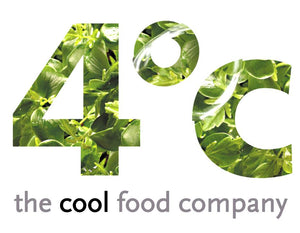Fruit
The arrival of Flat Peaches (aka, Directors’ Peaches, Donut Peaches, Saturn Peaches or Paraguayos) is always greatly anticipated and should arrive in the market about the second or third week in May. A few words of caution, however, is that initially their quality may be inconsistent and they will most certainly be expensive to begin with.
New Zealand Golden Kiwis are likely to arrive by the second or third week. As the name suggests, both their skin and flesh are of a distinctly yellower hue than their more common relatives, and their flavour smoother, less acidic and more vanilla-esque.
Spaish, Italian and Moroccan Aprocots should become fairly widely available during the month, but be advised that early examples are likely to be be quite pale, probably smallish and bland.
The Strasberry is a type of wild strawberry which shares many of the same characterisics as the rasberry, such as its deep red colouring, its round shape, its bumpy exterior and its soft texture. Imported from the Netherlands, they possess blackcurrent overtones and should be available by mid-month, but will only be around for about six weeks as their season is very short.
The seasonal switch from Spanish to Dutch & Belgian Strawberries should be complete, or near complete, by the first week or so of May, which will aslo mean a transition from 250g to 400g punnet sizes. Bear in mind also that Dutch & Belgian strawberries are graded differently and thereby usually smaller, though of more consistent proportions.
Salad
By about the thrid week of May the transition from imported to almost entirely English Salad Leaves will have hopefully occurred, which means that our standard fayre comprising Lollorosso, Lollobiondi, Oakleaf, Frisee, Round Lettuce, Iceberg, Cos and Baby Gem will all be home-grown. The astute among you, however, will have noticed one important omission, namely Radicchio, and that's because we tend to give preference to Italian radicchio whenever possible and is due to the fact that our buyer regards it as the best there is.
In addition to those salad leaves mentioned above, there is a possibility that English Red Gem Lettuce may arrive in the market before the end of the month. They differ from the common green variety of gem inasmuch as their heads tend to be larger and their leaves softer, looser (by which I mean less tightly compacted together) and slightly more bitter tasting.
Another likely homegrown new season arrival towards the end of the month are English Spring Onions which, like their Egyptian counterparts, tend to be quite slender and with less bulbous heads campared to other imports.
Another seasonal switch concerns that of Capsicums, during which Spanish will be replaced by entirely Dutch imports by around week 2 of the month. As with Dutch strawberries, you'll find them to more uniform in size than the Spanish ones they replace; furthermore their colouration should be much more even and consistent.
Veg
New season Corn-On-The-Cob should be arriving early in the month, most likely from Senegal or Turkey, both of which should be of quite a good standard. French imports probably won't arrive until the end of the month and homegrown not until June.
Both Italian Fresh Peas and Italian Broad Beans should be quite plentiful from fairly early in the month.
There's a good chance that new season English Broccoli will be available before the end of the month and should be of excellent quality right from the start.
Look out this month for the arrival of new season Egyptian Wet Garlic, which is freshly harvested garlic that's been sent to market before it's had time to dry out as a result of a long period in storage. Therefore what you get is garlic thats milder, juicier, more tender and with and aroma that's less pungent.
Herbs
New season English Coriander should arrive fairly early in the month and is usually of unequalled quality and piquancy.
English Flat Parsley should have reached its peak by May and be of consistently good quality throughout the month.
May Fruit Bowl
MAY can be a bit of a mixed bag consisting of bothhighlights and low-points for those compiling fruitbowls, baskets and platters.
Oranges can begin to show serious signs of age as we near the end of the European season, and with regard to small citrus fruits, there may still be European and north African Ortalinas and Nardorcotts during the first week or so, but they’ll likely make way for South African and South American Satsumas and Clementinas by the middle of the month.
Despite the presence early on of usually excellent Indian crops, Grapes can start to become problematic as the month progresses, and there is often a period where Seeded is the only option if one wishes to obtain reasonable quality.
It will almost certainly be necessary to turn to the Southern Hemisphere for Apples and Pears, which will inevitably lead to price hikes. European Plums will not yet be in season, meaning a continued reliance on Chilean imports, which often have a tendency to be hard and bland for most of the month.
On the upside, apricot-look-a-like, tangy and refreshingly juicy Nisperos start the month in fine fettle (but remember their skins are usually blemished with brown blotches when the fruit is ripe). By mid-month Apricots, Peaches and Nectarines from Morocco, Spain and Italy should have become fairly plentiful and reasonably priced.
European Cherries should make an appearance early on, but they will start off very expensive.
For a luxury tropical look, consider incorporating Physalis, Rambutans, Kumquats, Pitahaya, Baby Pineapple, Guava and Honey Mango. Israeli Lychees should also make a welcome appearance at somepoint during the month.
